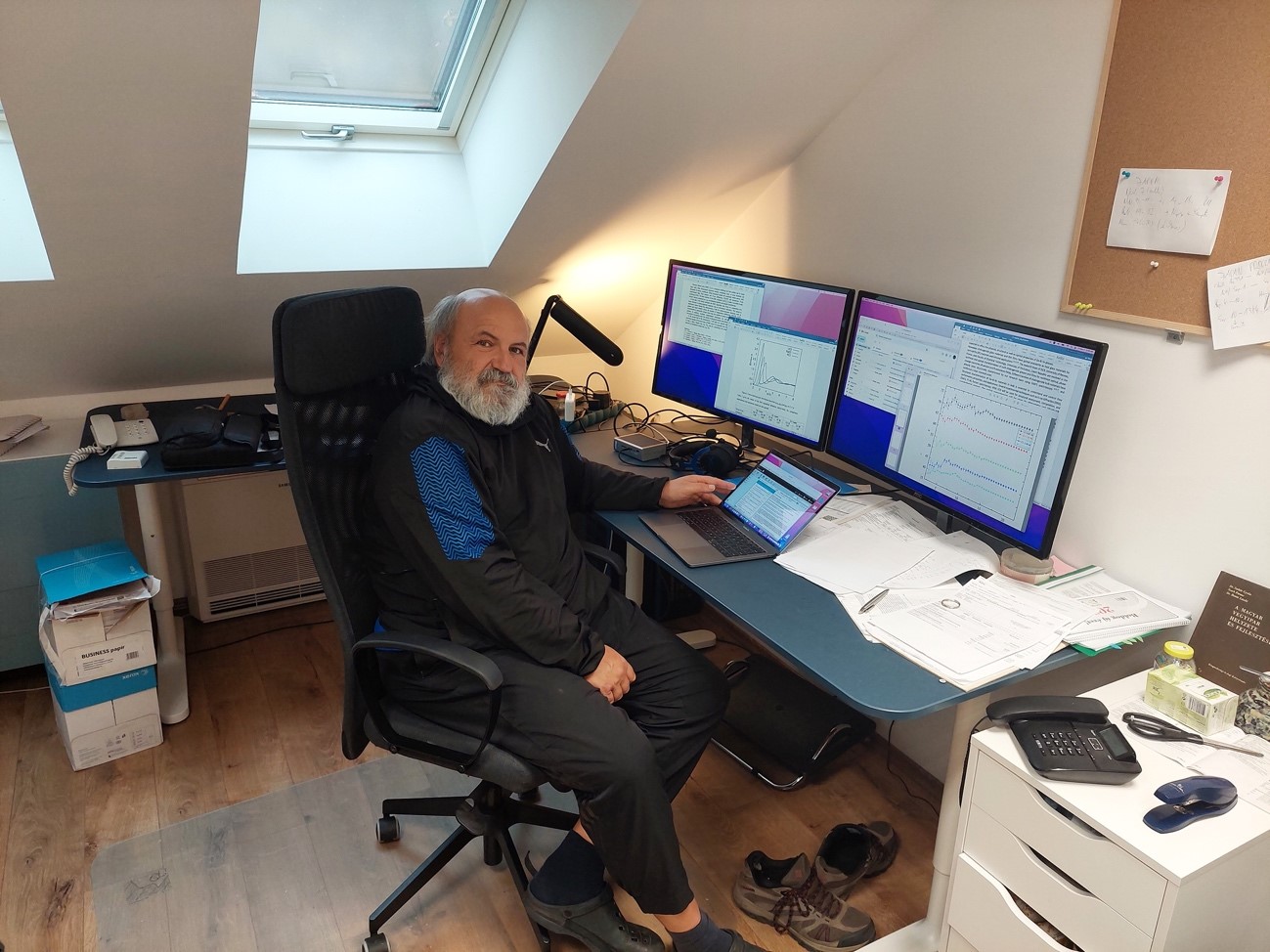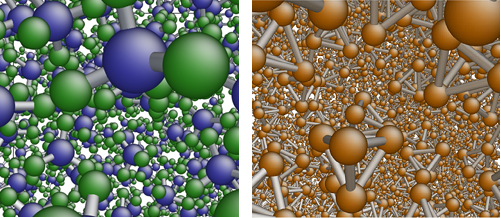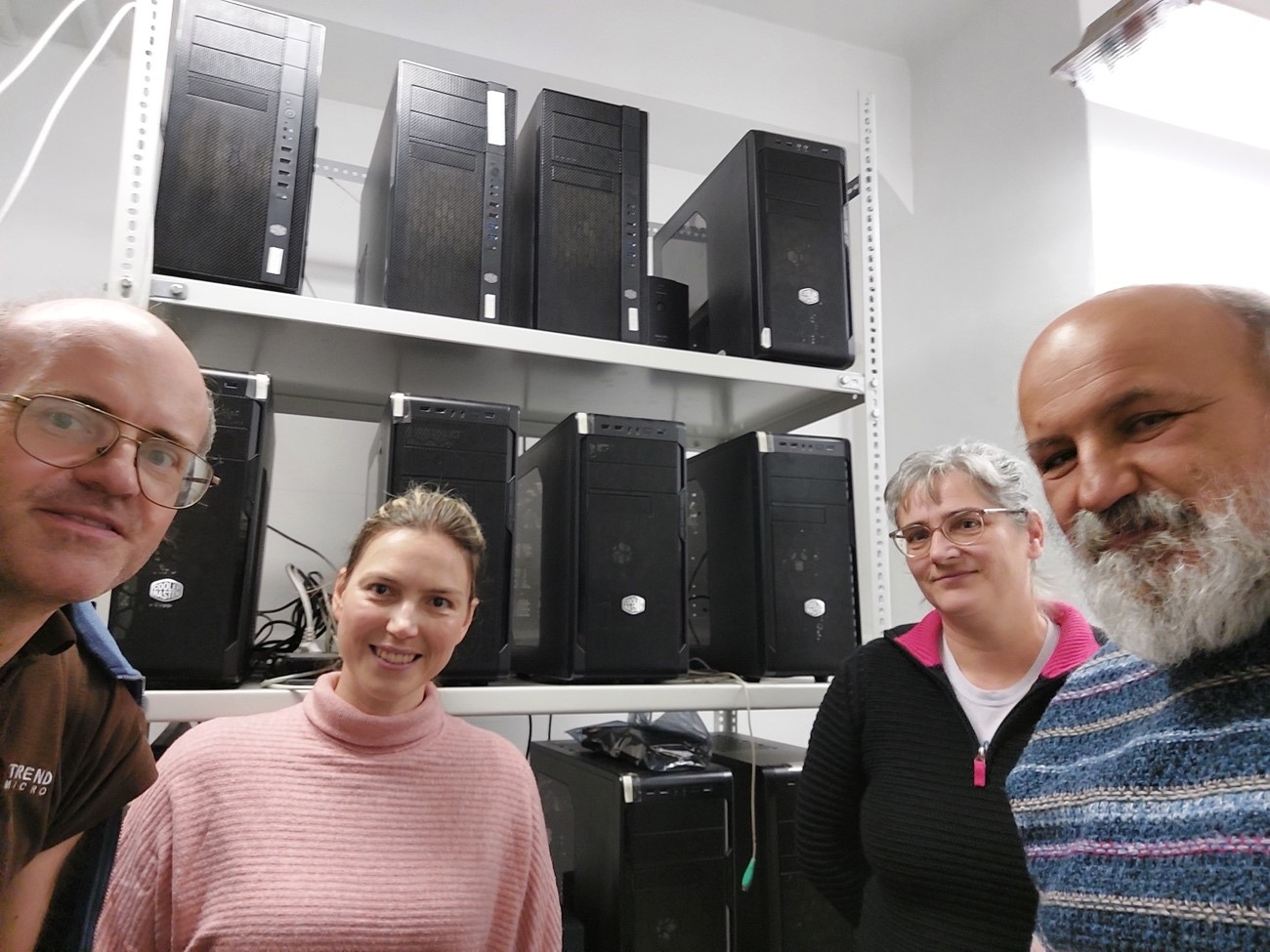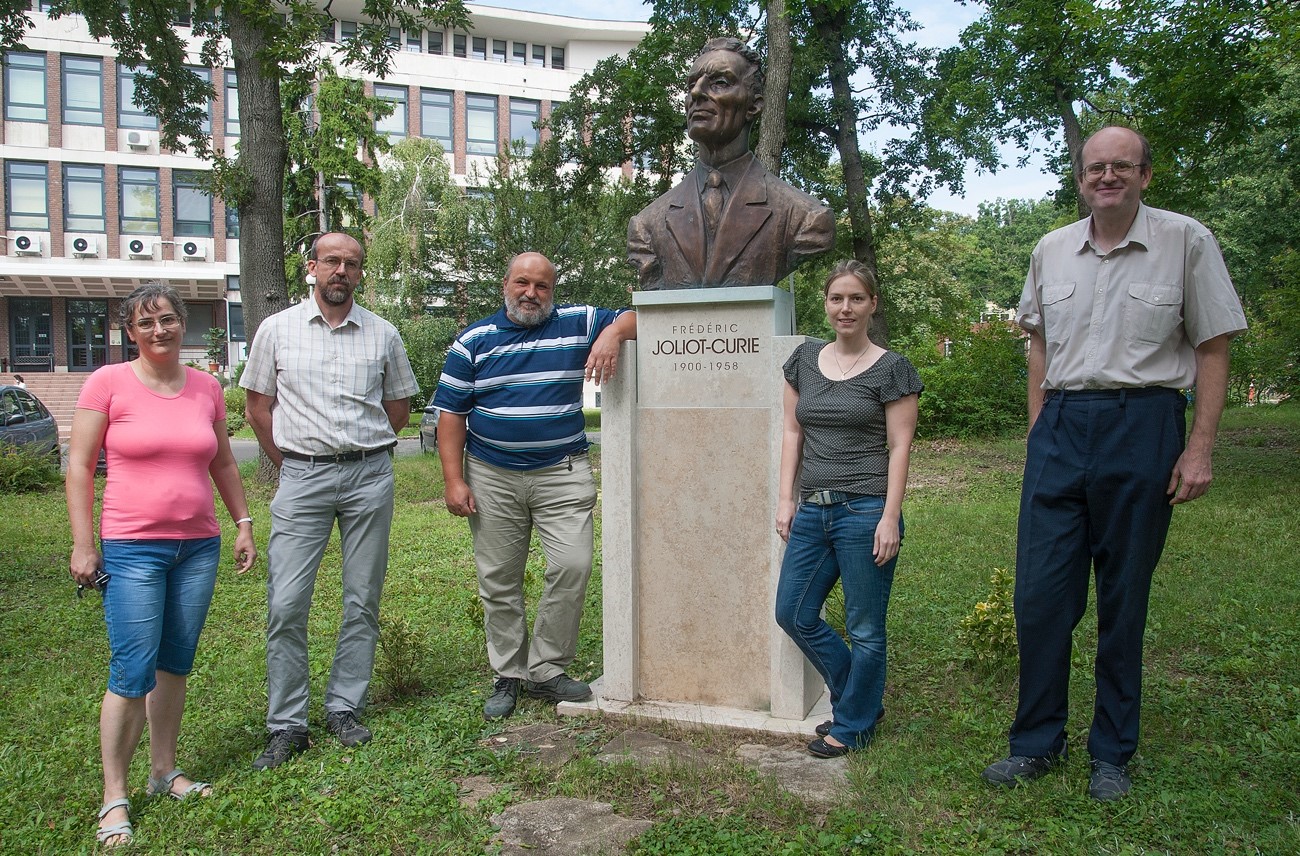NEWS
IROAST Researchers - Distinguished Professor László Pusztai
English Japanese
Keep challenging to understand the structure of liquid and amorphous materials at the atomic level

Distinguished Professor László Pusztai
International Research Organization for Advanced Science and Technology (IROAST)
Scientific Advisor, Wigner Research Centre for Physics, Hungary
IROAST has appointed world-class researchers from top universities and research institutions as Distinguished Professors to give lectures at seminars and symposiums, conduct joint research with Kumamoto University researchers, and provide research advice to graduate students and other young researchers. One of them is Distinguished Professor László Pusztai, who also serves as a member of the IROAST International Advisory Board, providing advice and feedback on IROAST's activities, achievements, and plans from an international perspective.
* This article is based on a written interview in English.
■ Thirty years of interest in the structure of "disordered" materials and analytical research
Q: Please tell us about your research.
Pusztai: Over the past thirty-some years, my primary aim has been the determination of the structure of liquids and amorphous materials at the atomic level. My ‘tools’ are neutron- and X-ray diffraction experiments, whose results I’ve been trying to interpret via computer simulation methods. As part of these activities, I’ve been actively involved in the foundation and development of a particular computer modeling method, called Reverse Monte Carlo (RMC) structural modeling.
In brief, RMC is capable of generating large, three-dimensional structures that are consistent with measured diffraction data. RMC has been applied for the structure determination of a wide variety of liquids and amorphous (non-crystalline solid) materials, such as water and aqueous solutions, aqueous alcohol mixtures, and metallic and covalent glasses. The kind of research I’ve been pursuing has helped us to understand, for instance, how salts and alcohols are dissolved in water, or how the reading and writing procedures work in DVDs and some memory devices.
Q: Why did you start this research?
Pusztai: This area is very challenging up to now, due to the lack of crystallinity, which, in turn, makes it impossible to use the well-known methods of crystallography. That is, there isn’t any way of determining the atomic/molecular structure of such ‘disordered’ materials in detail. On the other hand, a large part of the material world around us belongs to this category of materials: just consider water and aqueous solutions (in the seas, rivers, in the processes of, e.g., cooking and corrosion – and note that the human body itself is also a large and complicated assembly of various aqueous solutions…). So, in summary, when I was a young researcher, a multitude of interesting problems were in sight – and of course, quite a few experienced colleagues have also influenced my activities so that I’ve stayed in this research area.
Q: What are the expected outcomes of your research in the future?
Pusztai: In short, understanding the structure-function relationship is always a desired, and extremely important, outcome. In particular, based on knowledge acquired on the structure of relatively simple liquid mixtures where hydrogen bonding is dominant (like aqueous solutions of various alcohols), we wish to understand how proteins are solvated in a biological environment.
With Prof. Shinya Hosokawa and Assoc. Prof. Yoichi Nakajima, researchers at the Univesity, we (1) wish to find the structural background of the ‘rejuvenation’ effect in some metallic glasses, and (2) aim at understanding the structure of liquid iron under extremely high pressure and temperature (similar to conditions present in the Earth’s inner core).

Bulk liquid germanium-tetrachloride (left) and liquid phosphorus (right), as seen by Reverse Monte Carlo modeling.
Both liquids contain molecules of tetrahedral shapes.

The distribution of atoms in a Pd-Ni-Cu-P bulk metallic glass (non-crystalline metallic alloy).
Note the very densely packed structure.
■ Asking the right questions is just as important as actually finding the answers to those questions
Q: When and why did you decide to become a researcher?
Pusztai: When I was in my master's program, I believe, I realized I would like to continue the kind of work I was doing for my master's thesis.
I liked (and I still like!) the situation where asking the right question can be as important as actually finding the answer to that question. I also liked that the intellectual level of a research environment is usually very high (i.e., a researcher has colleagues that are rather clever). Furthermore, the general feeling of a kind of ‘freedom’ also attracted me very much: for instance, in a research environment, it is most usually not a problem if a student questions the opinion of senior colleagues.
Q: You have been involved in research for many years, what motivated you?
Pusztai People and problems… The younger researchers I’ve been responsible for (MSc and Ph.D. students) have given me a great deal of motivation: they needed attention, and they were always ready to question standard procedures (including my opinion), so I’ve had to be up-to-date every day. This has been a continuous driving force in my everyday life as an ‘experienced researcher’. And of course, I am also motivated by the possibility that a new scientific problem might appear at any time, as brought up in the discussion when I gave a "Special lecture" at the IROAST symposium in Kumamoto in September 2022, for example.

Members of the Liquid Structure research group in their dedicated server room
(from left to right: Dr. L. Temleitner, Dr. Sz. Pothoczki, Dr. I. Pethes, and Distinguished Prof. L. Pusztai).
■ Enjoy doing your research!
Q: What is your impression of Kumamoto?
Pusztai: I think Kumamoto is a very livable city. The climate from June to September is tough...but this is not Kumamoto's fault. The place is a good size for studying, working, and having fun, and it is neither too crowded nor too noisy. Suizenji Jojuen Garden is a true gem in my opinion. I like the Tatsudayama area, as well as walking by the Shirakawa and Tsuboi rivers.
Q: What are your expectations for IROAST?
Pusztai: Most Japanese universities, including Kumamoto University, would dearly need a lot more staff who have significant experience with international collaborations, and indeed, with actually living abroad for a while. Such professors could help young students to broaden their scope well beyond their home country; this, in turn, will be increasingly important for coping with global challenges like, for example, climate change. IROAST has, since its establishment, played a positive role in this process. In order to fulfill its original purpose of boosting internationalization, it seems to me that it would be desirable to have a larger scale and larger budget than we have now.
Q: What message do you have for future researchers?
Pusztai: Do not give up, even though salaries are lower in research than they are in the industry! As long as the curiosity about how nature works is alive in your soul, you would enjoy the life of a researcher more than the life of a company personnel. On the other hand, do not be afraid to switch and accept challenges from, e.g., applied research and practical innovation when you notice that your focus is shifting. Try not to take research simply as a profession: you will have a satisfying research career only if you (at least, sometimes…) enjoy the tasks your research work requires from you.

The Liquid Structure research group with the statue of Nobel Prize Winner Frederic Joliot-Curie (chemistry, 1935), who was also elected as a member of the Hungarian Academy of Sciences.
The statue, after a colorful and complicated story, has ended up in the secluded area of the ‘KFKI site’ on the hilly outskirts of Budapest, home to the Wigner Research Centre.
(From left to right: Dr. I. Pethes, Dr. P. Jóvári (present group leader), Distinguished Prof. L. Pusztai, Dr. Sz. Pothoczki, and Dr. L. Temleitner.)

